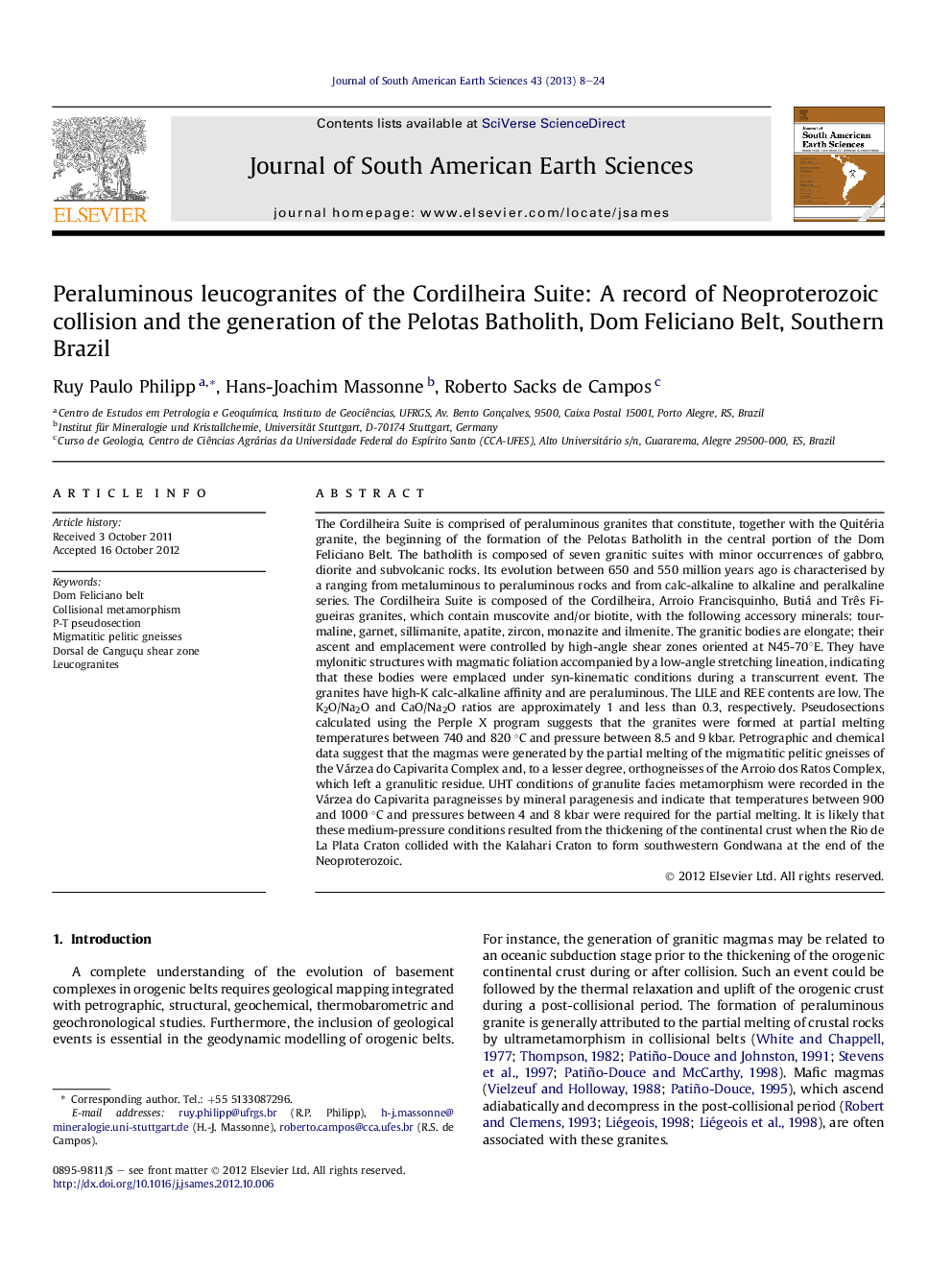| کد مقاله | کد نشریه | سال انتشار | مقاله انگلیسی | نسخه تمام متن |
|---|---|---|---|---|
| 4682440 | 1635166 | 2013 | 17 صفحه PDF | دانلود رایگان |

The Cordilheira Suite is comprised of peraluminous granites that constitute, together with the Quitéria granite, the beginning of the formation of the Pelotas Batholith in the central portion of the Dom Feliciano Belt. The batholith is composed of seven granitic suites with minor occurrences of gabbro, diorite and subvolcanic rocks. Its evolution between 650 and 550 million years ago is characterised by a ranging from metaluminous to peraluminous rocks and from calc-alkaline to alkaline and peralkaline series. The Cordilheira Suite is composed of the Cordilheira, Arroio Francisquinho, Butiá and Três Figueiras granites, which contain muscovite and/or biotite, with the following accessory minerals: tourmaline, garnet, sillimanite, apatite, zircon, monazite and ilmenite. The granitic bodies are elongate; their ascent and emplacement were controlled by high-angle shear zones oriented at N45-70°E. They have mylonitic structures with magmatic foliation accompanied by a low-angle stretching lineation, indicating that these bodies were emplaced under syn-kinematic conditions during a transcurrent event. The granites have high-K calc-alkaline affinity and are peraluminous. The LILE and REE contents are low. The K2O/Na2O and CaO/Na2O ratios are approximately 1 and less than 0.3, respectively. Pseudosections calculated using the Perple X program suggests that the granites were formed at partial melting temperatures between 740 and 820 °C and pressure between 8.5 and 9 kbar. Petrographic and chemical data suggest that the magmas were generated by the partial melting of the migmatitic pelitic gneisses of the Várzea do Capivarita Complex and, to a lesser degree, orthogneisses of the Arroio dos Ratos Complex, which left a granulitic residue. UHT conditions of granulite facies metamorphism were recorded in the Várzea do Capivarita paragneisses by mineral paragenesis and indicate that temperatures between 900 and 1000 °C and pressures between 4 and 8 kbar were required for the partial melting. It is likely that these medium-pressure conditions resulted from the thickening of the continental crust when the Rio de La Plata Craton collided with the Kalahari Craton to form southwestern Gondwana at the end of the Neoproterozoic.
► Partial melting of the pelitic gneisses and formation of peraluminous leucogranites.
► Orogenic metamorphism of ultra-high temperature (UHT) under granulitic facies conditions.
► Collision of the Rio de La Plata and Kalahari cratons (Brazilian cycle).
► Partial melting related to breakdown of the biotite in 740–820 °C and 6–8 kbar.
Journal: Journal of South American Earth Sciences - Volume 43, April 2013, Pages 8–24